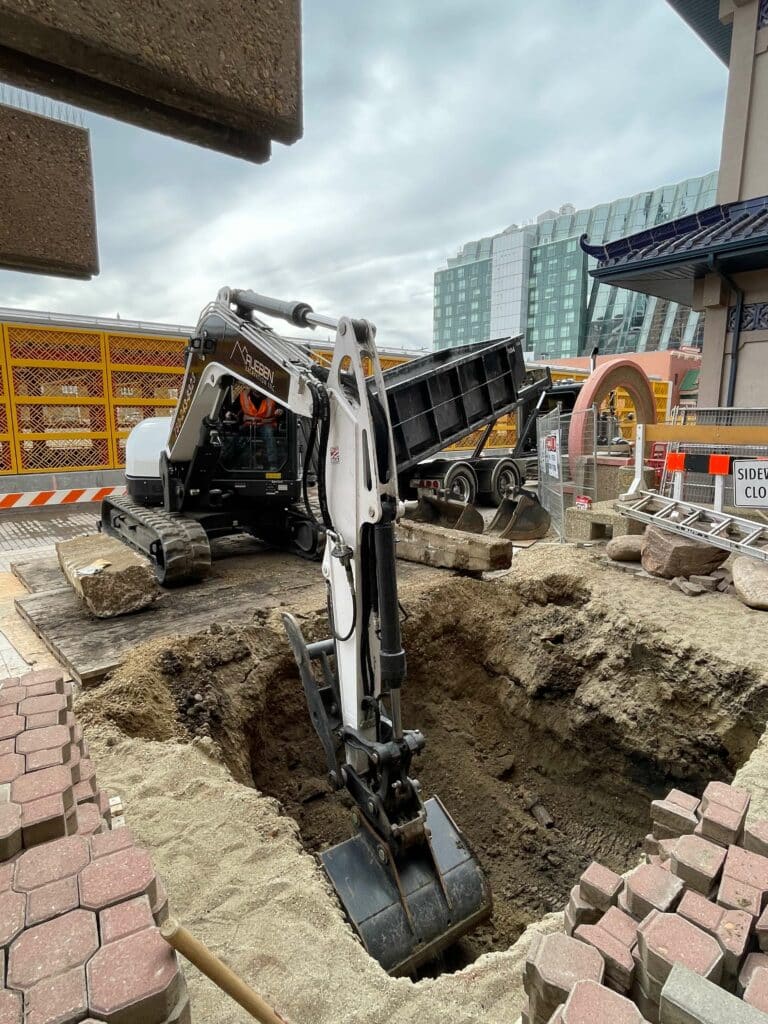Underground Sewer & Water Utility and Duct Bank Services in Dallas, TX & Surrounding Areas
Underground Utilities

Rueben Group Underground Utilities
Have an infrastructure project in the Dallas Metroplex? Leave your underground utility work to Rueben Group. We specialize in underground utility services in Dallas, TX, for the following utilities: Water, Sewer, Storm, Fire Line, Duct Bank, and Water Detention Systems.
We understand that having an experienced underground utilities contractor can make the difference between missing and making a project deadline. We are generally the first contractor on site and our work sets the pace for the project. We strive to ensure everything is completed on-time. In the planning phases, we will always use our knowledge and experience to make design and scheduling suggestions to help save you both time and money.
We Handle All Underground Water & Sewer Utility Work in North Dallas
Our team is ready to handle all your underground utilities for residential or commercial developments. Whether its new infrastructure, duct bank installation, emergency sewer line repair work, septic system repairs or installations, or a complex detention system, we have the experienced team to make it happen.
Emergency Utility Repair
Emergency Sewer Line Repair
Sewer and Water Line Installation
Emergency Utility Repair
When unexpected failures threaten your utilities, our emergency utility repair service stands ready 24/7. Utilizing cutting-edge diagnostic tools and repair techniques, our expert team swiftly restores service, minimizing downtime and disruption. Trust us for rapid response and professional restoration of your essential underground utilities.
Emergency Sewer Line Repair
Facing a sewer line crisis? Our emergency sewer line repair service offers quick, efficient solutions to prevent property damage and health hazards. With advanced technology and experienced professionals, we tackle blockages, leaks, and collapses, ensuring your system returns to optimal function with minimal environmental impact.
Sewer and Water Line Installation
Our sewer and water line installation services lay the foundation for a robust and reliable utility network. From planning to execution, our specialists employ precision engineering and sustainable practices, guaranteeing long-lasting infrastructure that meets regulatory standards and supports community growth.
Storm System Management
Our storm system management service is designed to effectively control and direct rainwater runoff, reduce flood risk, and protect property. Through innovative design and quality construction, we create efficient drainage solutions that safeguard communities and ecosystems, even in extreme weather conditions.
Septic System Services
Offering comprehensive septic system services, we specialize in the design, installation, maintenance, and repair of countless types of septic systems. Our approach combines environmental responsibility with technical expertise, ensuring your system operates efficiently, complies with health regulations, and promotes groundwater safety.
Catch Basin Installation and Maintenance
Catch basins play a crucial role in managing surface water and protecting property from water damage. Our installation and maintenance services ensure these systems function effectively, preventing clogs and facilitating smooth water flow. Rely on us for durable solutions that enhance urban drainage systems.
Grade Ring Adjustments
Grade ring adjustments are essential for maintaining proper utility hole cover levels and ensuring road safety and infrastructure longevity. Our precision adjustment services address settling and shifting issues, optimizing sewer function and compliance with surface criteria. Count on our expertise for accurate, timely interventions.
The Tried-and-True Rueben Group Process
Our approach to delivering top-notch underground utility services in Dallas, TX, is comprehensive and adheres to the highest industry standards. From initial contact through to project completion, we ensure every stage is executed with precision, professionalism, and a focus on safety and sustainability. Here’s a breakdown of how we conduct our services:
1. Initial Consultation and Site Evaluation:
- Conduct thorough assessments of present underground utilities to understand the unique needs and challenges of each project.
- Utilize advanced diagnostic equipment to accurately map and evaluate underground infrastructure.
2. Planning and Design:
- Develop detailed plans using the latest engineering software, ensuring efficient and effective utility solutions.
- Collaborate with clients, regulatory bodies, and other stakeholders to refine project objectives and methodologies.
3. Permitting and Compliance:
- Navigate the complex permitting process, securing all necessary approvals before work begins.
- Ensure all activities comply with local, state, and federal regulations, emphasizing environmental protection and safety.
4. Execution and Project Management:
- Deploy skilled technicians and state-of-the-art machinery to carry out construction and repairs with minimal disruption.
- Implement rigorous project management practices, maintaining open communication with clients and ensuring timelines and budgets are met.
5. Quality Assurance and Testing:
- Conduct comprehensive testing and inspections at various stages to guarantee the integrity and functionality of the installed or repaired systems.
- Adhere to strict quality control standards, ensuring that all work meets or exceeds industry specifications.
6. Restoration and Cleanup:
- Perform meticulous site restoration, returning the area to its original condition or better, following the completion of underground works.
- Remove all construction debris and ensure the site is clean, safe, and ready for use.
7. Post-Service Support:
- Provide detailed documentation of the work performed and the materials used, offering transparency and peace of mind.
- Offer ongoing maintenance services and support, ensuring the longevity and reliability of the underground utilities installations.
Leave Your Sewer & Water Utility Work To Us!
As we expand across the Dallas-Fort Worth Metroplex we are always looking to develop new relationships and partnerships. If you have a project in mind, give us a call today and see how we can be of service to you!
You can get in touch with our team by phone at 945-227-1077 or by requesting a quote online now.

